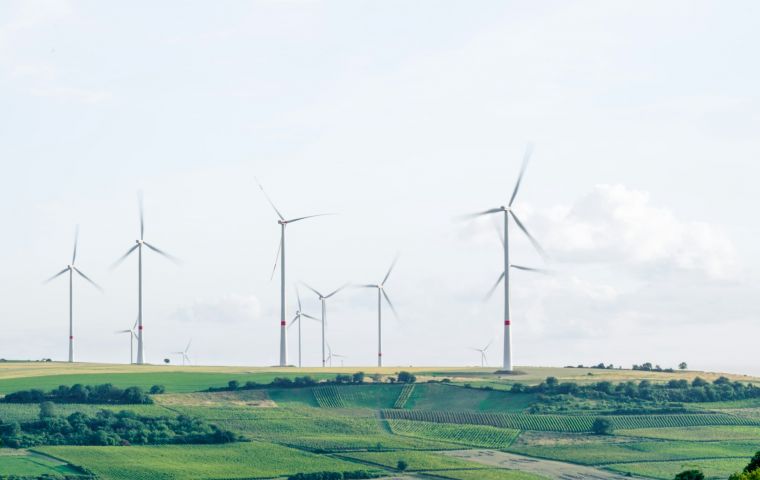MercoPress. South Atlantic News Agency
Green Hydrogen in Uruguay: Hype or Long‑Term Play?

Uruguay stands out as a global renewable energy success. By 2024, the country reached approximately 99% of its electricity supply from renewables, with wind, hydro, biomass, and solar power. The government now bets on green hydrogen to add economic value. A national roadmap targets the production of one million tonnes by 2040 and up to US$2 billion in annual export revenue.
Still, doubts remain. Producing hydrogen is costly, and global demand is not yet guaranteed. While digital trends like balloon game real money dominate online platforms, major infrastructure projects such as Uruguay’s hydrogen strategy often struggle to hold the spotlight — even though their impact is far greater. The question remains: can Uruguay turn it into a lasting economic pillar, or is this just a well-packaged promise?
The Current Reality: Strategy Meets Challenge
Uruguay’s approach builds on its clean power legacy. The roadmap details three phases:
- Phase I (until 2026): Pilot projects to link hydrogen to heavy transport.
- Phase II (2026–2030): Scale domestic production and begin export ventures.
- Phase III (2030–2040): Full rollout with 20 GW renewables and 10 GW electrolysers to hit production targets.
These stages aim to build a foundation for a scalable and export-ready sector.
Prospects and Limits: Benefits and Risks
The country’s green hydrogen sector shows great potential but also faces challenges. The cost of production is expected to fall to US$1.2–1.4 per kilogram by 2030, which boosts its competitiveness. Uruguay has strong export potential in shipping, aviation fuels, and ammonia. By 2040, up to 30,000 skilled jobs could be created, which will drive economic growth. Major projects like the US$4 billion green hydrogen and e-fuel plant in Paysandú reflect its commitment to this industry.
Uruguay is well-positioned for green hydrogen production, thanks to abundant wind and solar energy, freshwater resources, port access, and CO₂ from biomass. It also benefits from a stable institutional framework and governance, which provide a solid foundation for further development.
However, risks persist. Demand remains uncertain without long-term offtake agreements, and regulatory frameworks are still under development. The high capital investment required, along with investor caution, presents additional hurdles that need to be addressed.
So, Hype or Long‑Term Play?
Uruguay’s green hydrogen strategy is ambitious but untested. The country has strong natural and institutional assets, including excellent wind and solar conditions, a reliable legal system, and a history of clean energy leadership. In April 2025, Uruguay inaugurated the Vivestar Technologies H2 Hub, which contains electrolyzers, a design lab, and a training area. This facility is part of its broader strategy to reach 9 GW of hydrogen capacity by 2040.
However, turning hydrogen into a viable industry remains a challenge. Most countries are still in the pilot phase and deal with high production costs, uncertain demand, and evolving regulations. Uruguay aims to become a leader in this field but should avoid overpromising, underfunding, and relying too heavily on uncertain future demand.

Photo: Unsplash
Government actions should align with private sector timelines and global buyer needs. Uruguay also faces competition from major players like Australia, Chile, and Saudi Arabia in the race for hydrogen exports. If it can move from planning to full-scale deployment while maintaining investor confidence, it could establish itself as a long-term green hydrogen hub. Otherwise, its roadmap may remain just a vision.
Final Assessment
The country has assembled many ingredients for a viable hydrogen export model. It holds world‑class renewable energy capacity, institutional stability, and a strategic Atlantic port. Early pilot projects, such as the plant scheduled for 2026 in Fray Bentos and offshore wind zones tender plans via ANCAP, demonstrate progress.
Still, public enthusiasm and investor confidence should keep pace with project rollout. Unless buyers commit to volumes and legal frameworks mature, the industry may stall. Reports from Reuters and energy analysts warn of a “chicken‑and‑egg” situation: production needs buyers, but buyers need price certainty first.
If Uruguay secures offtake contracts, expands its electrolyser base, and enforces regulation, green hydrogen can become more than a vision. It can turn into a durable economic sector.




Top Comments
Disclaimer & comment rulesCommenting for this story is now closed.
If you have a Facebook account, become a fan and comment on our Facebook Page!